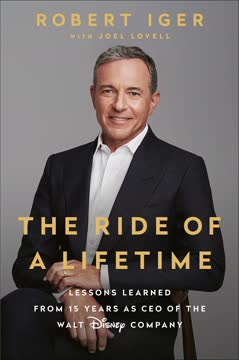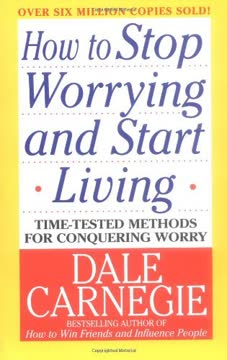Key Takeaways
1. Master the art of brevity in all written communications
"Do I need it?"
Eliminate unnecessary words. This simple question is the key to concise writing. Remove filler words like "very," "just," and "really." Replace weak verbs with stronger alternatives. Break long paragraphs into shorter, more digestible chunks. Use active voice and specific language to convey your message clearly and efficiently.
Focus on essential information. When crafting emails, resumes, or cover letters, include only the most relevant details. Ask yourself if each piece of information adds value to your message. If not, remove it. Remember that brevity demonstrates respect for the reader's time and showcases your ability to communicate effectively.
- Remove: "very," "just," "really," "that," "quite," "thing"
- Replace: "utilize" with "use"
- Avoid "-ing" verbs when possible
- Break long paragraphs into shorter ones
- Use active voice and specific language
2. Quantify achievements and experiences to stand out
"Quantify quantify quantify"
Use numbers to add credibility. Whenever possible, include specific metrics, percentages, or dollar amounts to illustrate your accomplishments. This approach provides concrete evidence of your impact and makes your achievements more memorable to potential employers.
Provide context for your accomplishments. Don't just state what you did; explain the scale and scope of your work. Instead of saying you "managed a team," specify the number of people you led and the project's duration. This level of detail helps employers understand the full extent of your capabilities and responsibilities.
- Example: "Grew organization's social media presence 400% over two-year period"
- Example: "Managed event coordination for a 500+ person fundraiser that brought in $350,000"
- Include: Number of people managed, project budgets, percentage improvements, time frames
3. Craft compelling email subject lines and introductions
"First and last names. The title of the email must contain the names of people relevant to your message."
Create specific subject lines. Use the recipient's name and a brief description of the email's purpose in the subject line. This approach increases the likelihood that your email will be opened and read promptly. For example, "James Seevers, application for product analyst position" is more effective than simply "Job application."
Start with a strong introduction. Begin your email by clearly stating your purpose and any relevant connections. If you're writing to someone you don't know, explain how you found their contact information. This transparency builds trust and increases the chances of a positive response.
- Subject line formula: [Your name] + [Purpose of email]
Introduction elements:- Your name and relevant context (e.g., mutual connection, where you found their contact)
- Clear statement of purpose
- Brief explanation of why you're reaching out to them specifically
4. Leverage storytelling in cover letters and interviews
"Instead of a predictable opening line, lead with a compelling personal story."
Use anecdotes to demonstrate skills. Rather than simply listing your qualifications, share specific examples that showcase your abilities in action. This approach makes your application more engaging and memorable, while also providing concrete evidence of your capabilities.
Structure your stories effectively. When sharing an anecdote, follow a clear structure: set the scene, describe the challenge, explain your actions, and highlight the results. This format helps employers understand the context of your achievements and the value you can bring to their organization.
Elements of an effective story:
- Setting: Provide context for the situation
- Challenge: Describe the problem or obstacle
- Action: Explain what you did to address the issue
- Result: Highlight the positive outcome of your actions
- Use stories to demonstrate key skills like problem-solving, leadership, or creativity
5. Build a strong LinkedIn profile and network strategically
"Every day, I protect sensitive information on thousands of people from hackers and cyberattacks."
Craft a compelling summary. Your LinkedIn summary should quickly capture your professional identity and the value you provide. Use specific details and achievements to stand out from generic descriptions. Aim for a concise yet impactful statement that showcases your unique skills and experiences.
Engage actively with your network. Don't just connect with people; interact meaningfully. Comment on posts, share relevant content, and reach out to contacts with personalized messages. This approach helps you build stronger relationships and increases your visibility within your professional community.
LinkedIn summary elements:
- Who you are professionally
- What you do (with specific details)
- How your work benefits others
- Your key skills or areas of expertise
Networking strategies:
- Personalize connection requests
- Engage with others' content regularly
- Share your own insights and experiences
- Offer help or resources to your connections
6. Create a one-page resume that highlights key accomplishments
"With resumes, it's not about including everything. It's about including the RIGHT things."
Prioritize relevant information. Focus on your most significant and recent achievements that directly relate to the job you're applying for. Use bullet points to make your resume scannable, and limit yourself to 3-5 key accomplishments for each position.
Use action verbs and specific metrics. Start each bullet point with a strong action verb, and include quantifiable results whenever possible. This approach clearly demonstrates your impact and makes your resume more compelling to potential employers.
Resume structure:
- Contact information
- Brief professional summary or objective
- Skills section (focus on technical and job-specific skills)
- Work experience (most recent first)
- Education
Tips for concise resume writing:
- Use bullet points instead of paragraphs
- Focus on achievements rather than job duties
- Tailor your resume for each job application
- Use industry-specific keywords
7. Ask thoughtful questions during job interviews
"Every part of the hiring process counts, but a face-to-face meeting is the best opportunity to dazzle the boss and land a coveted offer."
Prepare insightful questions. Research the company and industry thoroughly before your interview. Develop questions that demonstrate your knowledge and genuine interest in the position. This preparation shows initiative and helps you stand out from other candidates.
Use questions to showcase your skills. Frame your questions in a way that allows you to highlight your relevant experience or ideas. For example, you might ask about a specific company project and then share how your skills could contribute to its success.
Types of questions to ask:
- Background Check: Ask about the interviewer's career path
- Office Insight: Inquire about current company projects or initiatives
- Industry Knowledge: Discuss recent developments in the field
- Problem-Solving: Propose potential solutions to challenges the company faces
- Example: "I noticed you're expanding your eco-friendly product line. What strategies are you considering to market these new offerings to environmentally conscious consumers?"
8. Develop a side hustle to expand skills and opportunities
"Skip the trendy new TV show everyone talks about. Look away from social media. Pick a side hustle and build on it over time."
Explore your passions. Choose a side project that aligns with your interests and career goals. This approach ensures you'll stay motivated and committed to your side hustle, even when balancing it with your full-time job becomes challenging.
Learn transferable skills. Focus on developing skills through your side hustle that can benefit your primary career. This strategy allows you to grow professionally while pursuing your interests, potentially opening up new career opportunities in the future.
Benefits of a side hustle:
- Develop new skills
- Explore potential career changes
- Improve time management
- Build a professional network
- Discover new passions
Side hustle ideas: - Freelance writing or design
- Online tutoring or teaching
- Creating and selling digital products
- Consulting in your area of expertise
- Starting a niche blog or podcast
9. Gain valuable experience by living in a big city
"Big cities set you up for success"
Embrace diverse opportunities. Large urban areas offer a wide range of professional and cultural experiences. Take advantage of networking events, industry meetups, and cultural activities to broaden your horizons and expand your professional network.
Develop resilience and adaptability. Living in a big city often comes with challenges, from navigating complex public transportation systems to dealing with higher costs of living. These experiences can help you become more resourceful, flexible, and better equipped to handle future career challenges.
Skills developed in big cities:
- Time management
- Budgeting and financial planning
- Cross-cultural communication
- Networking and relationship-building
- Problem-solving and adaptability
Ways to maximize your big city experience: - Attend industry events and conferences
- Volunteer for local organizations
- Explore diverse neighborhoods and cultures
- Take on challenging projects at work
- Seek out mentorship opportunities
Last updated:
Review Summary
"Wait, How Do I Write This Email?" receives mostly positive reviews, with readers praising its comprehensive coverage of business communication beyond just email writing. Many find it valuable for job seekers and early-career professionals, offering practical templates and advice on various communication scenarios. The book's approach to concise yet engaging writing is particularly highlighted. Some reviewers note its focus on younger professionals, while others appreciate its relevance to changing communication norms. Overall, readers find it a useful guide for improving professional communication skills.
Similar Books










Download PDF
Download EPUB
.epub digital book format is ideal for reading ebooks on phones, tablets, and e-readers.




